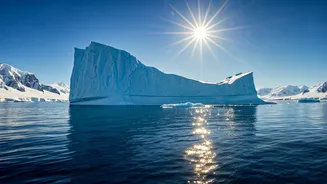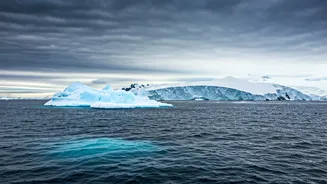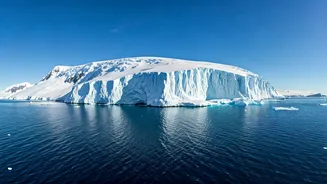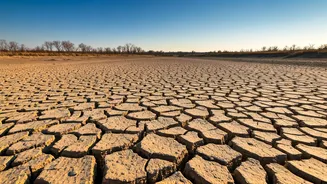Ice: A Time Machine
Ancient ice holds crucial information about Earth's past. Scientists use innovative dating methods to determine the age of ice cores, allowing them to peer
deep into history. These ice cores, found in places like Antarctica, act as time capsules. Trapped within them are air bubbles, dust particles, and other evidence, which provide invaluable insights into past climates, atmospheric composition, and environmental changes. The analysis of these ice cores allows researchers to understand how climate has changed over thousands of years and to evaluate the factors that drive these changes.
Dating the Frozen Record
Dating ancient ice is a complex process involving various scientific techniques. Researchers use methods like analyzing the ratio of different isotopes of oxygen and hydrogen in the ice. These ratios change with temperature, allowing scientists to estimate past climates. Another technique involves counting the annual layers of ice, similar to counting tree rings. Additionally, scientists measure the concentration of gases trapped in air bubbles in the ice, providing data on past atmospheric composition. These methods allow them to create a detailed timeline of climate change, identifying patterns and understanding the causes of environmental shifts.
Antarctica's Long Cooling
Antarctica has been a focal point for ice core research, yielding crucial data on past cooling trends. Ice cores extracted from the continent offer a detailed record of temperature variations over long periods. Scientists have analyzed these cores to understand how Antarctica's climate has evolved. These studies have uncovered evidence of significant cooling trends, allowing them to examine the factors that have influenced these changes. By studying ice cores, researchers can correlate Antarctic climate changes with global climate patterns, gaining a holistic view of the Earth's climate system.
The Global Ice Race
A global effort is underway to discover the oldest ice on Earth. Scientists worldwide are working tirelessly to locate and analyze ice cores that could provide even more comprehensive climate records. Researchers are actively exploring various locations, including remote and harsh environments, searching for pockets of ancient ice. The competition involves deploying advanced drilling equipment and employing sophisticated analytical techniques. Each new discovery has the potential to rewrite existing climate models and improve our comprehension of long-term climate behavior. This intense, worldwide collaboration promises to significantly enhance our climate knowledge.
Climate Insights Unveiled
The discovery of ancient ice has revolutionized our understanding of climate change, specifically regarding the past. Data obtained from ice cores have confirmed the relationship between greenhouse gas concentrations and global temperatures. This data has allowed scientists to validate existing climate models and predict future climate changes. This data has helped reveal the mechanisms behind glacial cycles, sea-level fluctuations, and the impact of volcanic eruptions. By providing a historical context, these findings inform current climate action. The new knowledge helps define the severity of current environmental issues.










